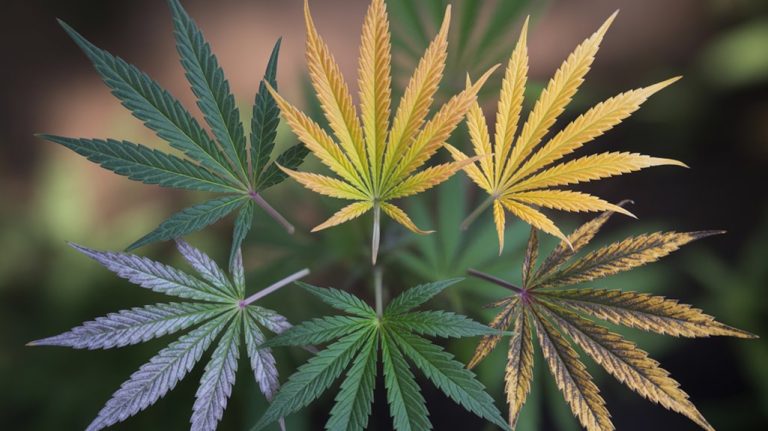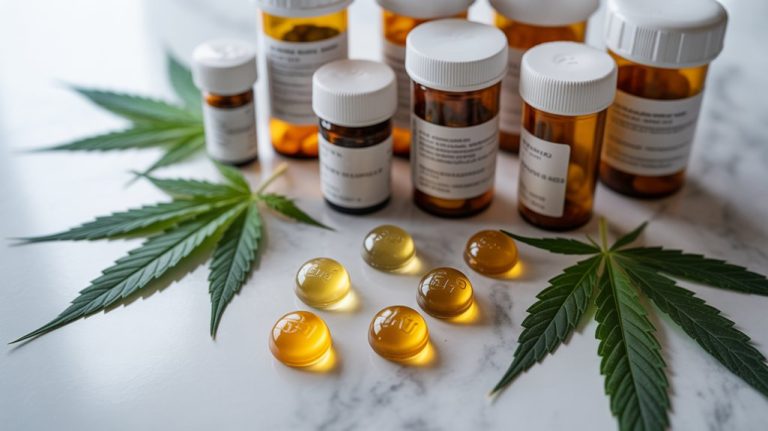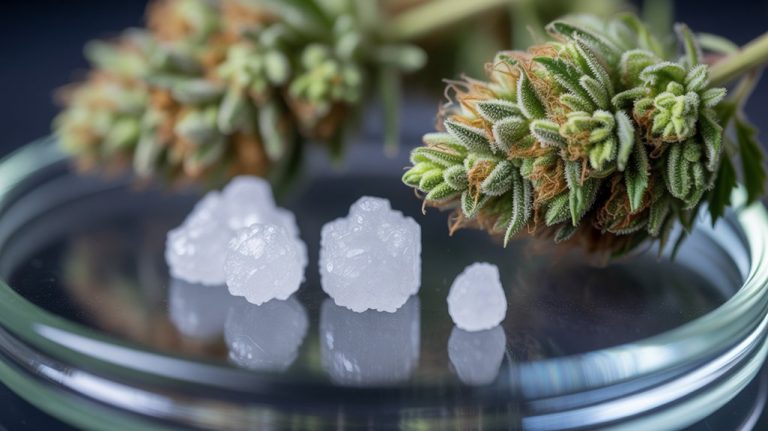Like Sisyphus eternally pushing his boulder uphill, you’ll find yourself needing increasingly higher doses of delta-9 THC to achieve the same euphoric effects you once experienced. This phenomenon occurs through CB1 receptor downregulation within your endocannabinoid system—a well-documented adaptive response to chronic cannabinoid exposure. Clinical studies demonstrate that tolerance can develop within 24-48 hours of repeated use, fundamentally altering your neurochemical landscape and leaving you wondering whether there’s a path back to your original sensitivity.
The Science Behind Delta-9 THC Tolerance Development
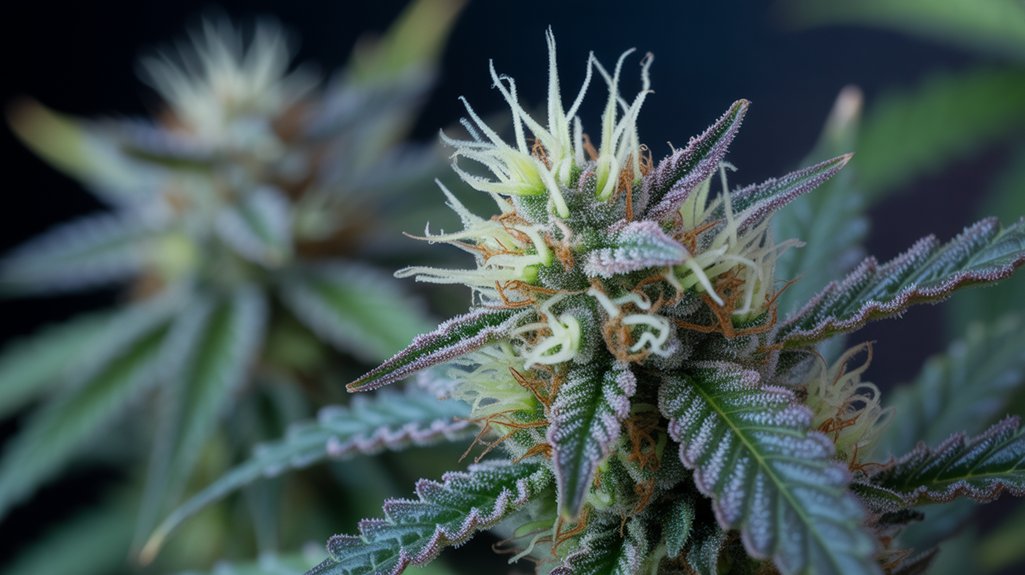
When you consume delta-9 THC repeatedly, your endocannabinoid system undergoes adaptive changes that diminish the compound’s psychoactive effects. The primary tolerance mechanism involves downregulation and desensitization of CB1 cannabinoid receptors in your brain.
Research demonstrates that chronic THC exposure reduces CB1 receptor density by up to 70% in regions like the hippocampus and cortex.
Your neurons respond to sustained THC binding by internalizing these receptors, making them less available for activation. Additionally, receptor coupling to G-proteins becomes less efficient, reducing signal transduction even when receptors remain accessible.
This neuroadaptation occurs within days of regular use and explains why you’ll need progressively higher doses to achieve the same therapeutic or psychoactive effects you initially experienced.
How Quickly Does Tolerance Build and What Factors Influence It
Delta-9 THC tolerance develops rapidly, with measurable changes occurring within 24-48 hours of initial exposure in most individuals.
The tolerance timeframe varies markedly based on several key factors. Dosage frequency and amount directly correlate with acceleration rates—daily users typically experience substantial tolerance within one to two weeks.
Your individual variability plays a vital role, influenced by genetic polymorphisms affecting CB1 receptor density and metabolic enzymes like CYP2C9.
Body composition, particularly adipose tissue distribution, affects cannabinoid storage and clearance rates. Age and sex hormones modulate endocannabinoid system sensitivity.
Concurrent medications, especially those affecting cytochrome P450 pathways, can alter tolerance development.
Pre-existing neurological conditions and baseline endocannabinoid tone contribute to individual differences in tolerance onset and severity.
Signs Your Body Has Developed a Tolerance to Delta-9 THC
As your body adapts to repeated Delta-9 THC exposure, you’ll notice distinct physiological and subjective indicators that tolerance has developed. These tolerance indicators manifest as measurable changes in your cannabinoid receptor sensitivity and neuroadaptive responses.
Primary body reactions signaling tolerance include:
- Diminished psychoactive effects – You require increasingly higher doses to achieve previously experienced euphoria, relaxation, or altered perception.
- Shortened duration of action – The therapeutic or recreational effects wear off considerably faster than during initial use periods.
- Reduced physiological responses – Previously noticeable changes in heart rate, blood pressure, and appetite become less pronounced or absent.
Cross-tolerance may also develop with other cannabinoids, affecting your sensitivity to CBD or synthetic cannabis compounds.
These neuroadaptive changes reflect downregulation of CB1 receptors and altered endocannabinoid signaling pathways throughout your central nervous system.
Effective Strategies to Reset Your THC Tolerance
Several evidence-based approaches can effectively restore cannabinoid receptor sensitivity and reverse tolerance-related neuroadaptations.
Tolerance breaks represent the most documented reset technique, requiring complete abstinence from delta-9 THC for 21-28 days to allow CB1 receptor density normalization. Research demonstrates that receptor downregulation begins reversing within 48 hours of cessation, with significant recovery occurring after two weeks.
You’ll find microdosing protocols effective for preventing tolerance development while maintaining therapeutic benefits.
Cycling consumption patterns—alternating between usage and abstinence periods—prevents receptor desensitization.
Switching delivery methods can temporarily circumvent tolerance mechanisms through altered pharmacokinetics.
Exercise, particularly aerobic activity, accelerates endocannabinoid system recovery by promoting neuroplasticity.
Sleep optimization supports receptor restoration through enhanced synaptic pruning during REM cycles.
Managing Long-Term Cannabis Use Without Losing Effectiveness
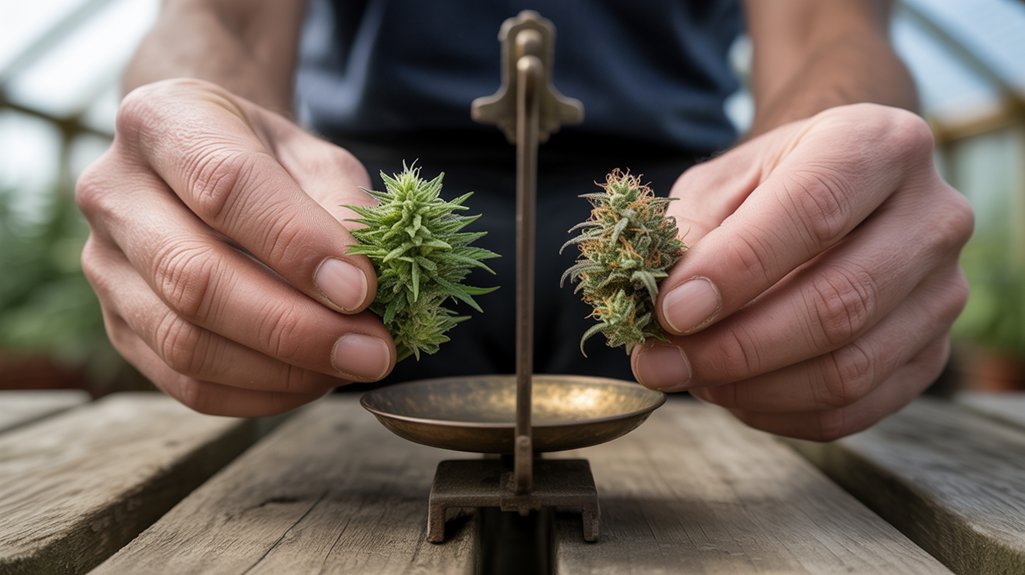
While complete tolerance breaks effectively reset cannabinoid sensitivity, sustainable long-term cannabis use requires strategic protocols that maintain therapeutic efficacy without necessitating extended abstinence periods.
Cannabis microdosing represents a cornerstone approach for preserving receptor sensitivity. By consuming minimal effective doses (2.5-5mg THC), you can maintain therapeutic benefits while preventing significant tolerance development. This technique maximizes endocannabinoid system responsiveness through controlled exposure.
Cannabinoid cycling involves systematic rotation between different cannabinoid profiles and consumption methods:
- Strain rotation: Alternating between indica, sativa, and hybrid cultivars prevents receptor adaptation to specific terpene-cannabinoid combinations.
- Consumption method variation: Rotating between vaporization, sublingual, and edible administration alters pharmacokinetic profiles and receptor engagement patterns.
- Scheduled micro-breaks: Implementing 24-48 hour abstinence periods weekly maintains baseline sensitivity without prolonged withdrawal effects.
These evidence-based strategies optimize long-term therapeutic outcomes while minimizing tolerance-related efficacy reduction.
Conclusion
You’ve mastered the art of cannabinoid receptor downregulation—congratulations on your neuroadaptive achievement! While you’re chasing diminishing returns through escalating dosages, your CB1 receptors aren’t impressed by your dedication. Evidence-based tolerance breaks remain your most effective intervention, though you’ll likely rationalize why your case is uniquely different. Your endocannabinoid system doesn’t negotiate, but systematic tolerance resets through abstinence periods can restore receptor sensitivity and therapeutic efficacy.

